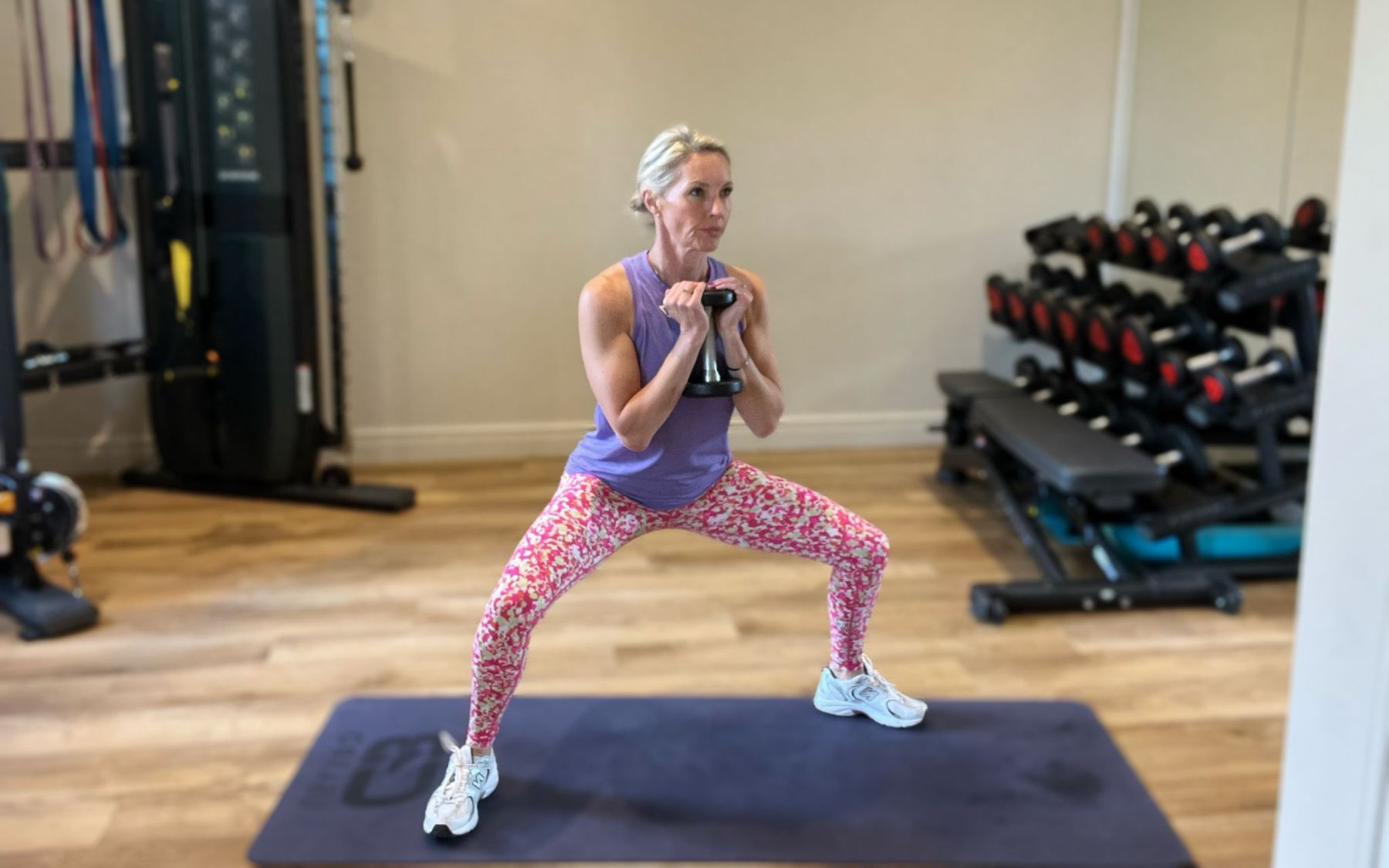Do you include squats in your weekly workout routine? If you’re a member of my platform then it’s unlikely you go a full week without a squat and there is a good reason for this! There are so many benefits of squats – they are such a great exercise and I am a firm believer that you should definitely work them into your fitness regimen regularly.
Before we dive into the benefits, if you are new to strength training and squatting then it is so important to work on your technique and ensure your form is correct before adding weights (or jumps) in.
Squats are a compound exercise which means that although they may be primarily a leg and glute exercise, they require whole body strength and coordination to be performed correctly. They are a functional exercise and the movement pattern helps up in everyday tasks and life (find out more about functional training here). So, what are my top ten reasons you should be squatting?
Squats build core strength: When performed with good form squats use the core in a big way. Studies have shown that squats engage the deep core muscles and surface level abdominal muscles even more than a traditional crunch. So, if you want abs of steel, get squatting!
Squats improve knee strength and stability: The bending and straightening of the knee joint in the squat action increases blood flow to the knee joint bringing oxygen and nutrients to the knee increasing the functionality and mobility of the joint. As the muscles surrounding the joint become stronger the joint itself becomes more stable as a result.
The varieties are endless: There are so many different types of squat – from single leg pistol squats to big wide sumo squats, from squat jumps to squat holds you can never get bored of this great exercise!
You can do them anywhere: Whilst you have the option to add dumbbells, kettlebells, barbels and bands you can do these without any equipment, anywhere in the world so are a great one to pop into your poolside bodyweight workout.
Squats increase power: When done with good form and correct technique squats will help improve performance. There is strong evidence from many studies showing that squatting and progressively adding weight to improve strength and power allows the body to exert more force onto the ground which improves running speed and jump height. So, if you are looking to run faster or improve performance then you need to be including squats into your strength training.
Squats build lean muscle: In a recent blog I discussed that to build lean muscle we need to create an environment which causes the body to release growth hormone and testosterone – and you guessed it squats create this anabolic environment and encourage the body to build muscle. The best news is that it encourages all over lean muscle growth, not just isolated to one area.
Following on from the previous point – building lean muscle will increase your metabolism. Put simply muscle burns fat, even at rest so if you are including exercises like squats in your routine you will have sustained calorie burn after your workout helping you to achieve your fitness goals and manage weight.
Did you know that squats will improve your posture? They help to build better balance and posture by increasing overall strength and this in turn helps us to carry our body in an optimal fashion – say goodbye to achy shoulders and back pain because of bad posture.
Squats can really help to improve bone strength – anyone who has followed me for a while will know this is really important and a point a I cannot raise enough. Strength training in general is amazing for offsetting the effects of ageing (and menopause) to maintain and increase bone density. By loading the bones through exercises like squats (and even better with weights or bands) we encourage bone growth which makes our bones stronger – you can read more about this here.
Finally – squats are famous for glute strength! And whilst this may be a benefit to some people (as squats do hit the glutes quite hard) building stronger glutes isn’t just important for aesthetic reasons! Strong glutes mean better posture, better balance, less back pain and you’ll be able to walk up those hills much more quickly and easily.
Why not try this 10 min glutes workout for free.
Do you include squats in your weekly workouts and what are your favourite squats?
Caroline x









